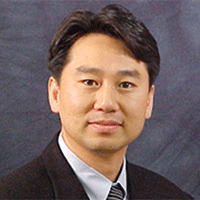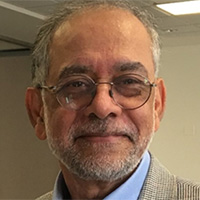Abstract: The Heterogeneous Integration Roadmap (HIR) is a roadmap to the future of electronics identifying technology requirements and potential solutions, in a post-Moore world. The primary objective is to stimulate pre-competitive global collaboration between industry, academia and government to accelerate progress. The roadmap offers professionals, industry, academia and research institutes a comprehensive, strategic forecast of technology over the next 15 years. The HIR also delivers a 25-year projection for heterogeneous integration of Emerging Research Devices and Emerging Research Materials with longer research-and-development timelines. The HIR is sponsored by three IEEE Societies (Electronics Packaging Society, Electron Devices Society & Photonics Society) together with SEMI and ASME EPPD.
Session I of this HIR Tutorial will dealt with the near-term as well as far-term reliability challenges and needs faced by the six major application segments identified in the HIR Roadmap. These include: (i) Aerospace and Defense; (ii) Automotive; (iii) High Performance Computing and Data Centers; (iv) Medical, Health and Wearables; (v) Mobile; (Vi) IoT. The second Session (presented by Prof. Dasgupta) will present the phased vision and activities that are being formulated and proposed by the Reliability Technology Working Group in the HIR Team, as the pan-industry global approach needed to meet these reliability needs of the relevant stakeholders. This vision will be presented in terms of goals and milestones for the short-horizon (1-5 years); mid-horizon (5—10 years) and far-horizon (10-15 years) time-scales. The purposes for this HIR tutorial are to elicit audience interest, solicit voluntary participation from the community in the HIR activities & to stimulate collaboration among HIR stakeholders around the world.

Jin Yang
Intel
Organizer & Moderator

SB Park
The State University of New York (SUNY) at Binghamton
Presenter

Abhijit Dasgupta
University of Maryland
Presenter
Biographies
Prof. Seungbae (SB) Park is a Professor of Mechanical engineering of the State University of New York at Binghamton. He is also the director of Integrated Electronics Engineering Center (IEEC), a New York State Center for Advanced Technology (CAT).
He received his Ph.D. at Purdue University in 1994. Upon graduation, Dr. Park began his professional career at IBM. He was responsible for the reliability of IBM’s corporate flip chip technology in both leaded and lead-free solders and high performance packaging. Dr. SB Park started his academic career as a professor of mechanical engineering at the State University of New York at Binghamton in 2002.
Professor Park is an expert in Modeling and Simulation for electronics components and systems integration. His contribution s have been recognized many international awards and citations. He has contributed in various 2.5D/3D package development, MEMS packaging, reliability assessment of assemblies and systems, and smart electronics manufacturing. He has more than 200 technical publications and holds 4 US patents. Dr. Park served for several technical committees including a member of JEDEC 14-1 Reliability Committee, co-chair of iNEMI Modeling and Simulation TWG, chair of "Electronics Packaging" council in Society of Experimental Mechanics, and an associate editor for ASME Journal of Electronic Packaging. Professor Park has been helping consumer electronics and packaging companies such as Microsoft, Samsung, ASE, Xilinx, and Qualcomm, as a consultant.
Abhijit Dasgupta is Jeong H. Kim Professor of Mechanical Engineering at the University of Maryland (UMD), with research experience in the microscale and nanoscale mechanics and reliability physics of engineered materials used in conventional and additively manufactured 3D flexible electronic packaging and intelligent microsystems. He holds a Ph.D. in Theoretical and Applied Mechanics from the University of Illinois at Urbana-Champaign (UIUC), and has been a principal investigator at the Center for Advanced Life Cycle Engineering (CALCE) at UMD for over 30 years, conducting research in reliability physics, design for reliability, accelerated stress testing, and real-time health management. He has published over 300 articles and conference papers; served on editorial boards of three international archival journals; presented over 45 workshops and short courses; helped form research and educational roadmaps for the electronics industry, and provided consulting services to numerous industry leaders. He has presented numerous keynote talks at international conferences, received 6 best-paper awards and received 8 major awards in recognition of his research and educational contributions. He is an ASME Fellow, past Chair of the ASME Electronic and Photonic Packaging Division (EPPD), past member of the ASME Design, Manufacturing and Materials Segment Leadership Team (DMM-SLT) and Current Chair of Reliability Technology Working Group in the Heterogeneous Integration Roadmap (HIR) Team sponsored by IEEE/ASME/SEMI/IEPS/EDS.